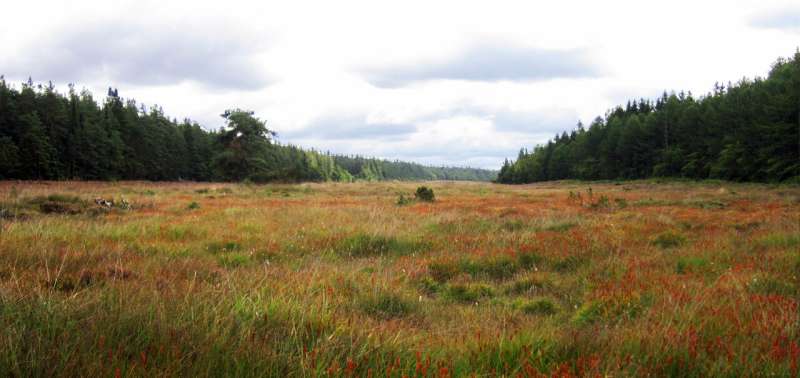Strontium isotope maps are disturbed by agricultural lime

Strontium isotopes are frequently used in archaeological studies to establish the provenance and migration history of prehistoric people and artifacts. Many of these studies may be based on incorrect data. A Danish study shows that agricultural lime can alter the composition of strontium isotopes dramatically, so that the modern isotopic signature of an area may be very different from the prehistoric signature.
A study by researchers at Department of Geoscience, Aarhus University, Denmark now shows that strontium isotopes may often be used incorrectly in archaeological studies, as the widespread use of added (strontium-rich) agricultural lime in low- to non-calcareous soils can dramatically alter the strontium isotopic composition of the surface waters running through them and the plants growing within them.
This is of special significance for strontium-isotope based provenance studies, where the strontium isotopic values measured in a prehistoric person's remains or in a given artefact are compared to measured strontium isotopic values in the surrounding, modern environment. Reference maps showing strontium isotope data dominated by the isotopic signature of modern agricultural lime, do not show the true strontium isotopic composition of the area during prehistoric times, when the individual being studied lived., or the object being studied was in created.
This can result in erroneous interpretations of the origin and movement of these prehistoric people and artefacts.
In their study published in Science Advances, the geologists Erik Thomsen and Rasmus Andreasen from Aarhus University discuss two prominent examples of this:
The iconic Bronze Age women, the Egtved Girl and the Skrydstrup Woman, who were found in Denmark in 1921 and 1935 respectively, but were recently (2015 & 2017) interpreted to have originated far away from Denmark. Moreover, the Egtved Girl was interpreted by the study's authors to have traveled back and forth between Denmark and another place, likely her homeland that was believed to be southern Germany.
These conclusions became a part of a larger framework of ideas of extended European mobility, migration, and trade, during the Bronze Age.
Conversely, the strontium data presented in the new study show that these two women could have obtained their strontium isotopic signatures within 10 km of their burial mounds, and do not indicate any cause to suspect that the women came from afar or traveled great distances during their lifetimes.
It is noteworthy that the effects of agricultural lime on the strontium isotopic composition demonstrated here is not isolated to this study's field areas in western Denmark but is likely to occur worldwide in arable areas with non-calcareous soils. The use of agricultural lime is ubiquitous in farming on less fertile soils to provide calcium for the plants and adjust soil acidity. Thus, many studies using strontium isotopes for provenance and mobility studies in these farmed low-calcareous areas may well need revision, and researchers should use care when sampling in these areas for such studies, in the future.
More information: E. Thomsen el al., "Agricultural lime disturbs natural strontium isotope variations: Implications for provenance and migration studies," Science Advances (2019). DOI: 10.1126/sciadv.aav8083 , advances.sciencemag.org/content/5/3/eaav8083
Journal information: Science Advances
Provided by Aarhus University




















